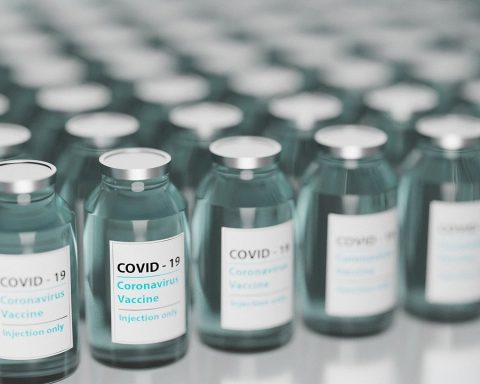According to MarketsandMarkets, the global pharmaceutical contract development and manufacturing market is projected to reach USD 126.63 billion by 2024 from USD 90 billion in 2019, at a CAGR of 7.1% during the forecast period. Growth in this market is driven by the rising demand for generics, increasing investments in pharmaceutical R&D, and investments in advanced manufacturing software like the electronic batch record (EBR) by CDMOs. Also, the increasing demand for biological therapies, growing focus on specialty medicines, growth in the nuclear medicines sector, and advancements in cell and gene therapies are expected to offer opportunities for market growth in the coming years.
The pharmaceutical development and manufacturing requirements are in constant flux. It is therefore imperative for companies to be abreast of industry trends to be successful and maintain their position in the market.
This market is bound by a myriad of challenges such as increasingly complex biologics development and manufacturing processes, drug pricing pressures, specialized requirements for manufacturing new product classes like novel forms of antibody-drug conjugates (ADCs). In response to market trends, the CDMO landscape is changing to meet evolving customer expectations. Further, a modest global economy and constantly changing regulations add to the challenges.
Significant CDMO Consolidation is likely to continue
Currently, the CDMO is a very fragmented market with the top 5 companies commanding a 10-15% share of the global market. This is, however, beginning to change, as more mergers and acquisitions are taking place across the industry, some of the biggest deals in the contract manufacturing sector took place from late 2016 through 2017.
More consolidation is expected in the next few years since many pharmaceutical companies are choosing to outsource to one full-service CDMO rather than several niche providers, as this simplifies the supply chain and can reduce time to market. Previously, big pharma companies had more than 300 CMO partners. In the present market scenario, these companies are looking to trim these partners to less than 50 CMO partners.
This is because the focus of big pharma companies is now shifting toward long-term partnerships with a few vendors. In addition, many larger CDMOs are acquiring smaller, niche facilities in multiple locations; especially emerging markets, to help bolster and expand their capabilities.
CRO-CDMOs Integration to offer More Growth Opportunities to Market Players
The explosion of biotechnology has resulted in a sharp increase in the number of drug candidates under development. This has made it necessary to outsource stages of drug development processes to manage capacities and access scientific and process innovations in order to develop cost-effective and efficient drug molecules. Also, numerous trends in the pharmaceutical industry are encouraging companies to outsource a range of activities from discovery through commercial production.
Big pharma companies, in particular, are transitioning to a leaner business model that relies heavily on outsourcing. The increase in drug development activities has also caused CDMOs and CROs to integrate with a focus on improving efficiencies. The horizontal integration of CDMOs and CROs has also enabled a shortened make-test cycle, where drug product manufacturing can be integrated within the clinical program. This model has found success in the European market and hence it is now being adopted in the US, which is the world’s largest R&D market.
Need for high levels of expertise for manufacturing parenteral formulations to boost demand for contract manufacturing
From a therapy perspective, demand for breakthrough therapies is on the rise, owing to increasing incidence and prevalence of chronic diseases such as diabetes and cancer. Injectables are expected to drive the demand for CDMO is the next five years owing to growth in biologics, oncology, and generics. One of the key factors driving market growth in this space is the demand for specialized manufacturing capabilities for complex products such as highly potent drugs/cytotoxics.
Containment technologies, dedicated facilities, experienced operators, and sophisticated equipment are all required for this purpose. The costs of building infrastructure on this scale prompt companies to look to outsourcing as a solution. Manufacturing capacity shortages for sterile and aseptic filling have been driving investment into additional capacity by CDMO players.
Biologics to drive CDMO growth in the next five years
Although small-molecule drugs dominate the global pharmaceutical market, the shares of biologics, biosimilars, and large-molecule drugs are expected to grow in the coming years due to the launch of new biologic-based drugs and increasing revenues from existing biologics. Over the last decade, over 200 biologics have been approved by the US FDA.
Also, biologics accounted for 25% of all drugs approved between 2014 and 2018, and 60–70% of the drugs currently under clinical development are biopharmaceuticals. This is indicative of a favorable outlook for biologics, due to their immense therapeutic possibilities and potential. The inherent complexity of biologics has prompted a demand for specialized expertise and a skilled workforce, providing growth opportunities for companies like Lonza and Samsung Biologics that serve this sector through various innovative technology platforms.
A high rate of manufacturing outsourcing is expected from Small and mid-size Pharma Companies
Over the last few years, there has been a continual increase in the number of small, specialty pharmaceutical companies, which need a development and manufacturing partner. Small and medium-sized pharmaceutical companies, as well as emerging pharmaceutical companies, typically require CDMOs to carry out a large portion of their drug development and manufacturing activities that help in saving costs on in-house capacity expansion and manufacturing infrastructure. Also, CDMOs provide expert regulatory advice to these companies.
Owing to these factors, small and emerging pharmaceutical companies represent a significant client base for CDMOs. The small and mid-sized pharma companies segment is projected to grow at a CAGR of ~8% during the next five years.
However, one of the major challenges faced by small and medium-sized pharmaceutical companies is that their smaller single projects often do not fit well within larger CDMOs, which results in delayed projects. This challenge is being magnified because of the increasing consolidation in the industry, which is creating larger CDMOs that are not perceived as suitable partners for smaller clients.
Author Details:
Pratishtha Akkanawru, Team Lead, MarketsandMarkets Research Pvt Ltd. Analysts at MarketsandMarkets have been tracking this industry for the past 10 years.







